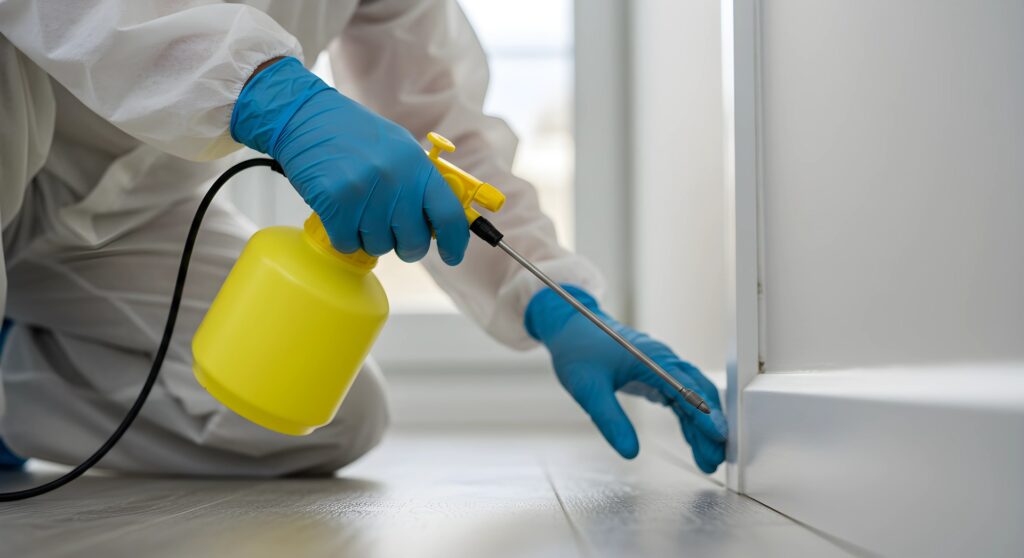Discovering bedbugs in your home can be a stressful and unsettling experience, but rest assured, you are not alone—and more importantly, there is a way to reclaim your space. These tiny, elusive pests are notorious for their resilience and rapid reproduction, making elimination a challenging task without the right knowledge and approach.
In this ultimate guide, we’ll walk you through proven tips and effective strategies to identify, treat, and prevent bedbug infestations for good.
1. Understanding Bedbugs: Identification and Behavior
Recognizing the signs of an infestation is the first step toward eradication. Look for small reddish or rusty stains on bedding, tiny black spots (bedbug excrement), shed skins, and, of course, the bugs themselves.
Bedbugs are excellent hitchhikers and can easily spread through luggage, clothing, and used furniture, which is why infestations can quickly escalate if not caught early.
Understanding their behavior is equally important. Bedbugs tend to stay close to their food source, which is why they are commonly found near beds and resting areas. They can survive for months without feeding, making them resilient and challenging to eliminate.
Knowing this helps in planning effective treatment strategies, such as thorough cleaning, strategic use of pesticides, and ongoing monitoring to prevent re-infestation.
2. Signs You Have a Bedbug Infestation
Bedbugs are notoriously elusive, but there are several telltale indicators that can alert you to their presence.
One of the most common signs is waking up with itchy, red bites on your skin, often arranged in a line or cluster. These bites typically appear on exposed areas such as the arms, neck, and face.

Another clear warning is spotting small, rust-colored stains on your bedding or mattress—these are bedbug droppings or crushed bugs.
You might also notice tiny white eggs or shed skins in the seams and crevices of your mattress, furniture, or baseboards.
Additionally, a musty, sweet odor can sometimes be detected in heavily infested areas, caused by the bedbugs’ scent glands.
3. Common Myths About Bedbugs Debunked
Let’s clear up some of the most common myths that surround these pesky insects, so you can approach eradication with confidence and the right knowledge.
Myth 1: Bedbugs Only Infest Dirty Homes
Contrary to popular belief, bedbugs are not attracted to filth or poor hygiene. They thrive wherever humans sleep or rest, regardless of how clean or tidy the environment is. Even the cleanest homes and hotels can become targets if bedbugs hitch a ride on luggage, clothing, or used furniture.
Myth 2: Bedbugs Can Fly or Jump
Bedbugs do not have wings and cannot fly or jump. Their method of travel is crawling, which is why they often spread by hitching a ride on personal belongings. Understanding their limited mobility can help you identify how they might have entered your space and where to inspect for signs.
Myth 3: You Can Get Rid of Bedbugs Quickly by Using DIY Sprays Alone
While there are many over-the-counter sprays available, relying solely on DIY treatments is rarely effective. Bedbugs are resilient and can hide in tiny crevices, making professional inspection and treatment essential in most cases. Combining thorough cleaning, vacuuming, and professional pest control yields the best results.

Myth 4: Bedbugs Only Bite at Night
Although bedbugs are nocturnal and prefer to feed at night, they can bite during the day if they are hungry and conditions allow. Don’t dismiss the possibility of a daytime infestation based on bite timing alone.
4. Immediate Steps to Take When You Discover Bedbugs
Discovering bedbugs in your home can be alarming, but taking swift and decisive action is crucial to prevent a full-blown infestation. The moment you spot signs of bedbugs—such as small reddish stains on your sheets, tiny dark spots (bedbug excrement), or even the bugs themselves—follow these immediate steps to contain the problem:
First, avoid moving items from the affected area to other parts of your home, as this can spread the bedbugs further. Strip all bedding, linens, and clothing from the infested room and seal them in plastic bags to prevent any bugs from escaping. Wash these items in hot water and dry them on the highest heat setting, as heat is one of the most effective ways to kill bedbugs and their eggs.
Next, thoroughly vacuum the mattress, bed frame, nearby furniture, and floor, paying special attention to cracks and crevices where bedbugs like to hide. After vacuuming, immediately dispose of the vacuum bag or contents in a sealed plastic bag outside your home.
Consider encasing your mattress and box spring in bedbug-proof covers to trap any remaining bugs and prevent new ones from settling. Finally, avoid clutter around your sleeping area to minimize hiding spots and make future inspections easier.
5. Preparing Your Home for Bedbug Treatment
Preparing your home thoroughly before bedbug treatment is a crucial step to ensure the effectiveness of any eradication method.
Before the professionals arrive or you begin a DIY treatment, take the time to declutter and clean your living spaces.
Remove any unnecessary items from bedrooms and living areas, as clutter provides hiding spots for bedbugs and can hinder treatment efforts. Wash all bedding, linens, curtains, and clothing in hot water and dry them on the highest heat setting to kill any bedbugs and their eggs lurking within fabrics.
Next, vacuum your entire home meticulously—pay special attention to mattresses, box springs, bed frames, baseboards, and cracks or crevices where bedbugs may hide. After vacuuming, promptly dispose of the vacuum bag or clean the canister with hot, soapy water to prevent reinfestation. Seal any cracks or openings in walls, baseboards, and furniture to minimize bedbug hiding places.
If using chemical treatments, remove or cover food, dishes, and utensils to avoid contamination. Additionally, temporarily relocate pets and their bedding during treatment to protect them from exposure to pesticides.
6. Proven DIY Methods to Eliminate Bedbugs
First, start by thoroughly cleaning and decluttering your living space. Bedbugs often hide in cracks, crevices, and cluttered areas, so reducing hiding spots makes treatment more effective. Vacuum your mattress, bed frame, carpets, and furniture meticulously, and promptly dispose of the vacuum bag or contents outside your home.
Next, use heat to your advantage. Bedbugs cannot survive high temperatures, so washing and drying infested bedding, clothing, and curtains on the hottest settings is a powerful way to kill both bugs and their eggs. Steam cleaning mattresses and upholstery can also penetrate deeper layers where bedbugs often hide.
Another useful DIY tactic is the application of diatomaceous earth, a natural powder that damages the exoskeleton of bedbugs, causing them to dehydrate and die. Sprinkle it lightly around bed frames, baseboards, and other known hiding places, but be sure to follow safety instructions when using it indoors.
Additionally, sealing cracks and crevices in walls, baseboards, and furniture helps prevent bedbugs from traveling between rooms or returning after treatment. Encase your mattress and box spring in specially designed bedbug-proof covers to trap any remaining bugs and starve them over time.
7. When and How to Use Professional Pest Control Services
If you’ve tried multiple treatments without success, or if the infestation is widespread throughout your home, it’s a strong indication that professional intervention is needed. Professionals have access to specialized tools, insecticides, and heat treatments that are far more potent than most over-the-counter options.
Additionally, their expertise allows them to identify hidden bedbug hiding spots, such as inside walls or furniture, that you might easily miss.
When choosing a pest control service, look for companies with proven experience in treating bedbugs specifically. Ask about the methods they use, treatment guarantees, and follow-up visits to ensure the bugs are completely gone. Scheduling treatment during times when you can prepare your home properly—such as washing bedding and clearing clutter—will maximize the effectiveness of their efforts.
8. Effective Chemical Treatments and Their Safety Considerations
When it comes to eliminating bedbugs, chemical treatments remain one of the most effective and widely used methods. Various insecticides are specifically formulated to target bedbugs at different life stages, providing a powerful tool to eradicate infestations quickly.
Common chemical options include pyrethroids, neonicotinoids, desiccants, and insect growth regulators (IGRs). Each of these works in unique ways—some attack the nervous system of bedbugs, while others disrupt their ability to grow and reproduce.
However, while chemical treatments can be highly effective, it’s essential to approach their use with safety in mind. Many insecticides contain potent active ingredients that can pose health risks to humans and pets if not applied correctly. Always follow the manufacturer’s instructions carefully, wear protective clothing, and ensure proper ventilation during and after treatment. It’s also wise to inform all household members and temporarily vacate the treated areas as recommended.
For those concerned about chemical exposure, consulting with a licensed pest control professional can be a safer alternative. Professionals not only have access to more effective formulations but also possess the training to apply treatments precisely, minimizing risks while maximizing bedbug elimination.
9. Natural and Non-Toxic Bedbug Remedies
When it comes to eliminating bedbugs, many people prefer natural and non-toxic remedies to avoid harsh chemicals that can be harmful to their health and the environment. Fortunately, there are several effective methods that harness everyday household items and natural ingredients to combat these persistent pests safely.
One popular remedy is diatomaceous earth, a fine powder made from fossilized aquatic organisms. When sprinkled around infested areas, it works by damaging the protective outer layer of bedbugs, causing them to dehydrate and die. It’s important to use food-grade diatomaceous earth and apply it carefully along bed frames, mattress seams, and baseboards.
Another natural option is essential oils, such as tea tree oil, lavender, and eucalyptus. These oils have insect-repellent properties and can be mixed with water to create a spray that deters bedbugs. While not a standalone solution, they can be a helpful addition to a broader treatment plan.
Heat treatment is also an effective non-toxic approach. Bedbugs cannot survive high temperatures, so washing infested bedding and clothing in hot water and drying them on the highest heat setting can kill both bugs and their eggs. Similarly, steam cleaning mattresses and furniture can penetrate into crevices where bedbugs hide.
10. Cleaning and Vacuuming Strategies to Remove Bedbugs
Start by decluttering the area around your bed and furniture to reduce the number of places bedbugs can hide. Use a vacuum cleaner with a strong suction and a crevice tool to reach deep into mattress seams, bed frames, baseboards, carpets, and upholstered furniture. Pay special attention to cracks, electrical outlets, and behind picture frames, as bedbugs often seek shelter in these spots.
After vacuuming, immediately seal and dispose of the vacuum bag or empty the canister contents into a sealed plastic bag and discard it outside your home to prevent any surviving bugs from escaping. For added protection, consider using a vacuum with a HEPA filter to trap tiny particles and allergens.
Following vacuuming, wash all bedding, curtains, and clothing in hot water and dry them on the highest heat setting to kill any remaining bedbugs and eggs. Regular and consistent cleaning combined with other treatment methods significantly increases your chances of completely eradicating bedbugs and reclaiming your home.
11. Using Heat and Cold Treatments to Kill Bedbugs
Heat and cold treatments are highly effective, chemical-free methods for eliminating bedbugs from your home. Bedbugs are sensitive to extreme temperatures, and exposing them to either intense heat or freezing cold can destroy all life stages, from eggs to adults.
Heat Treatments
Professional heat treatments involve raising the temperature of an infested room or even an entire home to around 120°F (49°C) or higher for several hours.
At these temperatures, bedbugs cannot survive. This method penetrates deep into cracks, furniture, and bedding where bedbugs often hide. Many pest control companies offer this service, which is fast, non-toxic, and leaves no chemical residue. For DIY options, portable heaters or steamers can be used to target smaller areas like mattresses, bed frames, and baseboards.
Cold Treatments
Bedbugs are also vulnerable to freezing temperatures. Exposing infested items to temperatures below 0°F (-18°C) for at least four days can effectively kill bedbugs at all stages. This method works well for smaller belongings like clothing, bedding, or toys, which can be sealed in plastic bags and placed in a freezer. While cold treatments are less common than heat, they provide a safe alternative for those sensitive to chemicals or heat.
Both heat and cold treatments can be powerful components of a comprehensive bedbug elimination plan. However, because bedbugs often hide in hard-to-reach places, combining these temperature-based methods with thorough cleaning, vacuuming, and professional pest control services will maximize your chances of getting rid of bedbugs for good.
12. Preventing Bedbug Reinfestation: Best Practices
Preventing bedbug reinfestation is just as crucial as eliminating the initial infestation. After you’ve successfully treated your home, taking proactive steps to avoid bringing bedbugs back will save you time, money, and stress. Start by regularly inspecting common hiding spots such as mattress seams, bed frames, furniture crevices, and baseboards. When traveling, always check hotel beds and luggage areas thoroughly, and consider using protective covers for your luggage.
Wash and dry your bedding, clothing, and curtains on high heat frequently, as bedbugs cannot survive extreme temperatures. Additionally, reduce clutter around your sleeping areas to minimize hiding places and make inspections easier.
If you bring secondhand furniture or clothing into your home, inspect and treat these items carefully before introducing them to your living space.




